
Edition 136 - February 2012

Photo: Judie Weedon
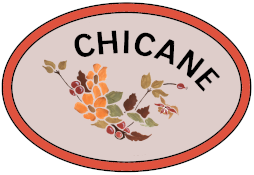
EDITORIAL
Christmas is over and we are now well in to the New Year. The Christmas festivities in the village were successful and happy, enjoyed by everyone. The bumper crop of messages in the Newsletter boosted Manor Hall and Newsletter funds by the tune of £150 each - thank you - and the Carol Singing in the Square raised over £100 for Devon Air Ambulance.
The season brought with it the inevitable coughs and colds and get well wishes go to everyone who has suffered or is not feeling too great at present. There have also been one or two 'comings and goings' and our good wishes go to everyone who has left the village and a warm welcome as well to all newcomers.
Thank you to Paul whose illustrations continue to enhance our newsletter and there are lots of interesting articles again in this issue and my thanks to everyone who has put pen to paper or gone on their computer and e-mailed me.
Our printer is anxious to have the 'copy' slightly earlier and so that I can do this, I must in turn put the deadline for articles earlier. Instead of mid-month preceding issue, I should appreciate having articles, etc., by the end of the first week. It might be helpful, especially to regular contributors, to make a note of the new deadlines:
- 8th March - for April issue - due out 29th March
- 8th May - for June issue - due out 31st May
- 9th July - for August issue - due out 2nd August
- 10th September - for October issue - due out 4th October
- 8th November - for December issue - due out 29th November
- 8th January 2013 - for February issue - due out 1st February
Whilst the evenings are drawing out, the mornings still seem very dark but spring is not far away. However, the flowers seem totally confused! There are daffodils, primroses, camellias and snowdrops flowering alongside roses and last year's summer bedding plants still giving bright colours!
A reminder that British Summer Time starts on Sunday morning, 25th March!
Judie - Ed
1

IN MEMORIAM
The still pools at Asuka.
Memory does not
Pass away so easily.
Akahito
TOM TUCKER
It was with shock and incredulity that we learnt Tom had
passed away unexpectedly on the 11th January after a brief illness. A loving and much loved husband, Tom will be
sorely missed and our thoughts are with Mary
and all the family at this very sad time.
A true gentleman, Tom will be missed in so many ways by his
friends, neighbours and everyone who knew him.
The overflowing chapel at the
crematorium at his funeral was a tribute to the respect and love in which he
was held.
One of his last wishes was to thank everyone for their get
well cards, messages and visits during his only spell in hospital, he found
them 'very cheering'. Bless you Tom.
Mary would like to thank everyone for the many cards, messages,
and for attending Tom's funeral and the help
and support she has received over the last few weeks.

2

WEATHER OR NOT
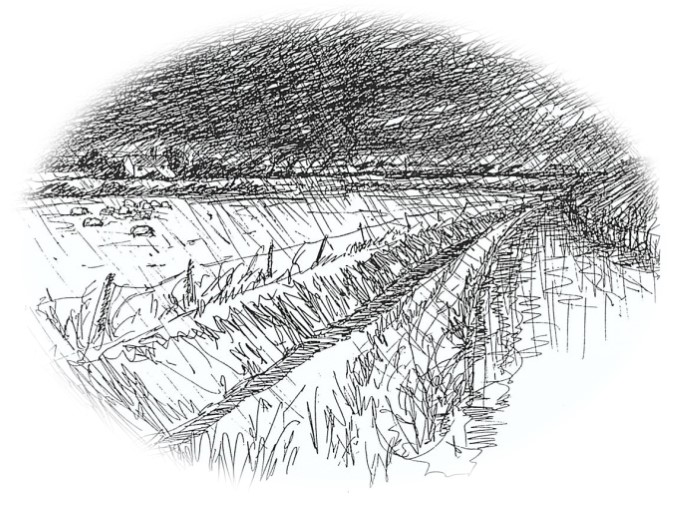
November was a complete contrast to last year. It was the second driest November that we have
recorded with a total of only 64mm [2 9/16"] of rain. Winds were fairly light for much of the
month and on the 4th we recorded only 4 knots - the calmest since the middle of
January. The wind did pick up a bit
more towards the end of the month with a maximum wind gust of 32 knots on the
27th. Temperatures ranged between 3.7
Deg C and 17 Deg C with a wind chill below freezing on only two days. By comparison, last year after the 20th
temperatures dropped into single figures with overnight temperatures staying
below freezing. The wind chill was
below freezing on 13 days and -10 Deg C on two days. The sunshine hours of 28.53 were the highest
since keeping records in 2002.
December made up for the dry November with a total of 187mm
[7 5/16"] making it the wettest month of the year. The rain was spread
throughout the month with only five days without any recordable rain. It was much milder than last December with a
maximum of 12.4 Deg C, which in itself was not exceptional - we have recorded
up to 14.3 Deg C in December 1997. But
temperatures were in double figures for much of the month and the minimum was
only 3.2 Deg C, the first December that we have not recorded a minus figure. The wind chill was down to -10 Deg C on a couple
of days and there were very few days with a wind chill above freezing. This was as a result of the strong winds
that we had throughout the month with frequent gale or strong wind warnings,
the strongest gust recorded was 32 knots but readings were distorted by the
valley. Far from being a white
Christmas, the month ended on a damp mild note. December's sunshine hours of only 3.2
reflect the gloomy, overcast month and were the second lowest recorded.
Despite the rain in December, 2011 was one of the driest
years we have recorded. With a total
rainfall of 1089 [42 7/8"] it was not far behind 2010 with 1019 [40 1/8"] and
2006 with 1054 [41 1/2"].
As we write this there are still no signs of any very cold
weather, but there is plenty of wind about.
We wish everyone a Happy New Year.
Illustration by: Peter Rothwell
Simon and Sue
3
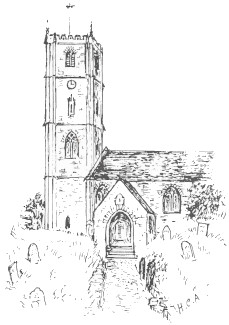
ST. PETER'S CHURCH
Christmas
Carol Service
A lovely Carol Service was held at St. Peter's on the
Wednesday before Christmas, the church having been beautifully decorated with
flowers and candles by all the flower ladies.
The choir from our Primary School holding candles led the procession
with Berrynarbor Choir all singing 'Once in Royal David's City'. The lit candles were then placed in prepared
trays and displayed in front of the altar.
Reverend Chris led the service based on the Nine Lessons and
Carols sung in many cathedrals and churches throughout the land.
Led by Headteacher Sue Carey, the School sang a beautiful
piece of Christmas music entitled 'Follow that Star'. The large congregation then sang 'On
Christmas Night all Christians Sing', followed by a lively performance of John
Rutter's 'Shepherds' Pipe Carol' by our Choir.
Berrynarbor Choir is made up of singers from Berrynarbor and
Parracombe and we must convey our hearty thanks to the ladies and gentlemen of
Parracombe for their dedication - they have been attending our choir practice
on Monday evenings for well over a year!
As is tradition, the School sang 'Away in a Manger' with the
congregation joining in with the last verse.
'O Come all Ye Faithful' brought the service to a close with
mulled wine and mince pies served to complete a wonderful and joyous evening.
A very big thank you to all who attended and to all the
helpers who contributed to make the evening a success!
Stuart Neale - Organist and Choirmaster
More than fifty worshippers attended the Christmas Eve Holy
Communion at 9.30 p.m. Officiated by
Reverend George Billington, the service commenced with the blessing and placing
of Baby Jesus in the crib. The
collection was donated to the Children's Hospice South West.
It is always a pleasure to welcome so many visitors and
parishioners to the church and thankfully the weather was much milder than last
year.
The Christmas Day Communion Service at 11.00 a.m. was also
well attended and was taken by Rector Chris.
We are grateful to Phil Bridle for playing the organ in Stuart's absence
as he was playing at Combe Martin church.
Doreen
Prater
Special dates during February
and March:
- 22nd February - Ash Wednesday
- 26th February - First Sunday in Lent
- 18th March - Mothering Sunday, when we shall look forward to a Family Service with children from the School.
All services will begin at 11.00 a.m. and it is hoped that a
regular pattern will be established soon.
In the meantime, 'variety is the spice of life!'
Looking ahead, Easter Day will be on 8th April with Palm
Sunday the week before, on the 1st. We shall continue to meet at The Globe once a month for the
Friendship Lunch - the dates are Wednesdays 29th February and 28th March. Our thanks to Karen and the staff for their
hospitality and kind welcome.
Mary Tucker
4
F
IS FOR . . . .
F is for February the time of year when
Newsletter Finances and Funds are reviewed and subscriptions
for readers receiving their copy by post need to be renewed. If you are someone to whom this applies, a
letter is enclosed.
Thanks to the grant from the Parish Council, donation from
the Parochial Church Council and your generous donations, the funds look quite
healthy. But with ever-increasing
prices of stationery, printing and other costs, they need to be kept topped up!
And now Royal Mail have announced that they are hoping to
increase the price of 2nd Class post to a staggering 55p, and no limit on the
cost of 1st Class.
The subscription for postal readers has remained the same
for a couple of years, but with this forecast increase in postage will now, I'm
afraid, need to be increased to £6.00 for a year [February-December,
inc.]. This does not, however, include
the cost of the newsletter itself, which runs at approximately £1.00 a
copy. Although nominally a 'freebie',
donations towards that cost are always very welcome and much appreciated.
Advertising costs remain at 1/4 page £5.00, 1/2 page £10.00, or
£25 and £50 respectively for 6 issues.
My thanks also to our paper-boys, Dave and Terry, and Sue's
of Combe Martin who kindly deliver newsletters with the papers.
Judie Weedon
5

RURAL
REFLECTIONS 52
2012: WILL RECORDS BE BROKEN?
Between
2006 and 2007 I made a twelve month observation of the Cairn in
Ilfracombe. On one walk taken on
midwinter's day I made the following note:
Both the
sound and the feel of Cairn Top's short grass crunching beneath my boots are
foreign. How splendid to witness frost; and one so hard,
the sight of a white landscape as I look out from the summit such a rarity.

A rarity indeed. It was to be the only frosty morning of what
was to be a wet and mild winter. Yet
the weather came as no surprise, mimicking as it did the mild temperatures of
previous winters where wild flowers such as herb Robert, red campion and
hogweed were unseasonably but regularly recorded.
The trend for mild winters led some
people to misunderstand the consequences of global warming. Assuming as they did that seasonal
temperatures would steadily increase, their misinterpretation gained
affirmation when the spring of 2007 saw a prolonged and exceptional spell of
warm weather. As a result, the Cairn's
bluebells peaked well ahead of time. By
early May they were already past their best; by mid-May they looked sorrowful,
their stems having been flattened by a bombardment of heavy downpours.
The rain of late spring was to be a
preliminary round to a summer fixture list crowded with wet days. June became the wettest on record; by the end
of July it was officially the wettest early summer. It was also a summer where domestic heating
systems regularly worked overtime, so cool were daytime temperatures. So what had happened to the 'warming'
effect? Some suggested it was merely a
one-off summer. Unfortunately not! Since 2007 summer weather records have
continued to be broken - but in the wrong direction.
Many now argue that such unseasonable
weather, often linked with extremities, is the true consequence of global
warming. Its effect on nature, however,
can be detrimental, with our recent spring and summer pattern just one
example. Having been encouraged out of
hibernation early by exceptional warm weather, survival suddenly becomes a
challenge in unexpectedly low temperatures and subsequent food scarcity.
Unexpectedly low temperatures can also
refer to winters of late. Indeed, the first hint North Devon had that winters
may not always be mild and 'white free' came in February 2009 when the weather
gods decided to play a trick on its inhabitants. Rather than sprinkling their usual packages
of snow everywhere and giving the countryside a delicate white dusting, the
gods decided to deliver it by parcel force instead!
Some people were frustrated at the havoc
it caused. Ilfracombe, for example, was
temporarily cut off from the outside world.
But the scene it created both in Ilfracombe and across the rest of North
Devon was purely magical. Unable to get
to work, or indeed go anywhere, everyone just put on their big coats and boots
and took advantage of an opportunity to observe our countryside shrouded
beneath a white blanket. Residents from
one village spoke to residents from another as they passed along a country
footpath. Meanwhile complete strangers
began having snowball fights in parks;
and whilst all other plants had their spring preparation halted, the
snowdrops were given the chance to stand tall and boast their splendour and
resilience in the face of harsh conditions.
The snow soon melted and within days it
had vanished. The same, however, could
not be said of the following January. As
each night passed, the temperatures plummeted, causing snowflakes to link with
their next-door-neighbours, toughening in the process and turning
transparent. Surfaces were soon
suffocated beneath thick layers of ice, too thick for the sun's weak winter
rays to penetrate. Indeed, if the
musical chords of a bolero had been rolled out across the conurbations,
Torville and Dean could have taken their choice upon which pavement to
skate! What's more, they could have
danced their routine without fear of interruption, concrete making a rare
appearance; and just like it always does when it lingers in urban locations,
the snow soon turned grey and looked dirty.

The countryside meanwhile remained
bleached. Green blades of grass were
concealed beneath the white. Hedge banks
acted as buffers for drifts of snow.
Tree branches became ledges upon which flakes could come to rest. Villages and woods mirrored the scene on the
Christmas card that still stood on the fireplace; and whilst the card would be
on view for only a few more days, the picture outside was intent on remaining
unchanged for some time to come.
The angel on the tree that was removed
on Twelfth Night in 2010 would then witness snow the following Christmas. This time, however, the snow was already in
evidence before she was delicately removed from her box. And so it came to pass that for a third
successive winter the snow lay heavy
whilst temperatures reached new lows.
This last winter again saw records broken although this time at the
other end of the scale. Aberdeen, for
example, recorded its warmest Christmas day [15 degrees] since 1920.
Autumn has also displayed unseasonable
behaviour and broken records in recent years . In 2009 a period of southerly
winds, unusual for the time of year, brought warmth which the trees interpreted
as a return to summer. Concluding it was
not yet time to dislodge their leaves, a bizarre scene unfolded in the parks
with golden trees swaying heavily in strong winds and not a fallen leaf to be
seen on any of the paths.
So with 2012 heralding the long awaited
Olympics on home soil one wonders what records will be broken this year - both
by mere mortals and the weather gods.
Illustrations
by Paul Swailes
Steve
McCarthy
6
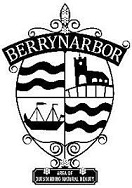
REPORT FROM THE PARISH COUNCIL
Since the report in the December issue, two new Councillors
have been co-opted on to the Parish Council - Adam Stanbury and Brian Lethaby - bringing the
number to 7 with 2 vacancies. If there
is anyone interested in filling either of these two places, please contact
me. Meetings are held on the 2nd Tuesday
in the month at 7.00 p.m.
Active Villages:
Berrynarbor has been chosen as one of the 19 villages to benefit from
this project and Louise Harris, the Co-ordinator, will make a return visit to
the Parish Council meeting on 14th February.
It is hoped that a Public Meeting can be organised so that Councillors
can get parishioners thoughts on what they would like to see in the village. Without input from YOU the parishioners, the
Parish Council won't know what you want.
Please make sure you tell us.
Is there anyone out there who would like to be responsible
for the CPRE and Mole Valley Farmers Best Kept Village competition? The object of the competition is to
encourage villages possessing a real sense of community to improve their local
environment by caring for buildings, clearing litter and promoting
schemes to improve the general appearance of the area or to develop, enhance or
sustain village amenities. Judges do
not look for architectural merit, prettiness or an abundance of flowers but the
absence of unsightly litter, refuse dumps on verges and the condition of
village greens, playing fields, school yards, public seats and noticeboards and
other village facilities, and evidence of community spirit and usefulness of
Village Map which needs to be supplied with the entry form. Please contact me if you are interested.
[A reminder, however, that the
group who for their love of our village have been carrying out very many of
these requirements, will be continuing to do so. As said in the December Newsletter, they
'will be digging, planting, litter picking, etc., and keeping the village
bloomin' beautiful'!]
The Queen's Diamond Jubilee:
Councillors have agreed to purchase a commemorative item to mark this
unique occasion. If you are the parent
or carer of a child living within the Parish who will be under 16 on the 2nd June 2012 and would like
them to be included in the list to receive an item, please again contact me so
that their name is added. Any member of
the village who would like to register their interest to purchase an item is
also invited to contact me for further details.
Sue Squire - Parish Clerk
Tel: [01598] 710526 or e-mail: susan.squire@virgin.net
The next meetings of the
Parish Council will be: Tuesday, 14th
February and Tuesday, 13th March. Penn
Curzon Room, Manor Hall, 7.00 p.m.
Berrynarbor offers very little organised activities for the youth of our
village and parish, out of school hours.
This is a very important time for young
people to meet and socialise in a safe and healthy environment.
In this year of the Olympics, the
government has been backing many initiatives to support children in sporting
activities. As mentioned in the Parish
Council report, Louise Harris, who has met and will be meeting again with the
Council, has identified £3,500 available to the parish.
We could think bigger and explore the
possibility of obtaining grants to support building an all-weather sports
facility to benefit all ages - North Molton and Atherington has. This is a fantastic project run by young
farmers.
We also fall into the area which can be
supported with grants from the Fullabrook Wind Turbine Fund. With thanks to those folks who give up their
time to oversee the management - we did it for the shop, can we do it
again?
Lorna Bowden
It
is important that the Parish Council are aware of YOUR view on how this money
should be spent, so please watch for details of when and where the public
meeting will be held.
7
WHERE
ARE YOU NOW?
Berrynarbor Youth Club began in the
1970's and was run by Jean
Palmano and myself. When the Palmano's
left Woodvale, Jimmy Brooks joined me.
Many of the members of the Youth Club had been known to Mary Hughes and
me in the 1960's when we ran the Play Group
The following list of names are from the
Club registers of the 1970's and 80's.
If you are or know someone on the list, please get in touch. It would be lovely to have brief details of
where you are now, what you are up to and what you have achieved [and that goes
for those of you still living in the village or local area too!].
Please make contact via the Newsletter,
either to the address at the beginning of this issue, or by e-mail to ed@berrynarbor-news.co.uk. I hope to hear from you.
Lorna Bowden
Peter
Bowden, Bobby, Christopher and Richard Bowden, Robert Ambrose,Warren
Bailey, Stephen Bowen, Adrian and Tim Brookman, Kevin Brooks, Shaun and Neil
Cooper, Melanie Cornish, two members of the Copp family, Rachael Delve, J [?]
Denning, Lisa, Lana and Allyson Draper, Lyn
Emery, Janet, Rachel and Wendy Fanner, Jane and Paul Hadley, Anthony and Jamie
Hepper, Julia and Helen Hannam, Liane Hughes, Sarah Lethaby,
Jamie Longstaff, Lisa [?] Markham, Gerald Marangone,
Sharon McCracken, Alan Mason, Cindy and Garbiella Palmano, Ian
Pringle, David Richards, Neil Richards, Kevin Robinson, Susan, Peter and David
Stevens, Melanie Stokes, Nicola and Sarah Songhurst, Caroline
and Clare Sullivan, David Sawyer, Jenny and Susan Todd, Nigel
Watts, Tanya and Louise Walls, Phillip Worth, Michael and Tim
Yendole, James Weedon.
8
BERRYNARBOR'S FAMOUS SON
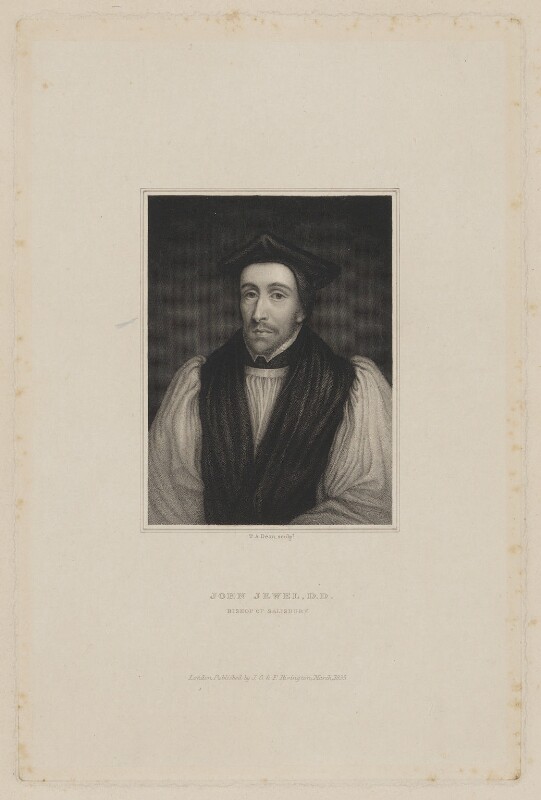
John Jewel
by Thomas Anthony Dean, published by John Rivington,
published by George Rivington,
published by Francis Rivington, after George Vertue
stipple engraving, published March 1835 (1715)
Acquired, 1964
NPG D36520
© National Portrait Gallery, London
Licenced under CC BY-NC-ND 3.0
Did you know that Berrynarbor has produced a celebrity? Not many people have heard of John Jewell these
days but in the 16th century he became a famous writer and Bishop, a
household name for those who took their religion and politics seriously - and
most did! This month sees his 600th
anniversary.
John Jewell was born at Bowden Farm in
February 1512. His father bore the same name. His uncle was a Rector although it would be
technically incorrect to say that this was in the Church of England, for the
country was experiencing religion-shock. When John was being educated, Henry
VIII was starting to assert national sovereignty rather than the church look to
Rome. John's career was shaped by these
events which sound to us like a minor management change but which transformed
England. The Reformation meant that the
English church was no longer in fellowship with Rome. Going its own way meant
that people were cut off from the source of their faith and perhaps of heaven. The year John matriculated at Oxford, 1535,
was just before Henry shut down the monasteries. John Jewell was a ready student and became a learned man. He also became
Protestant which was not a safe label to wear in the time of Mary. Under Elizabeth's
succession he returned to England, and made earnest efforts to secure what
would now be called a low-church settlement of religion. Strongly committed to the Elizabethan reforms,
in 1560, John Jewell was consecrated Bishop of Salisbury. He was a writer as well as having a fine brain
that could take on those who were opposed to what was going on and attempt to
refute them. He issued a challenge to
all comers to prove the Roman Catholic case out of the Scriptures, or the
councils or Fathers of the Church for the first six hundred years after Christ.
The result was a work in Latin, Jewel's
'Apologia ecclesiae Anglicanae', published in 1562, which is the first
methodical statement of the position of the Church of England against the Church of Rome.
Translated, it reached a wider audience and was a significant step in the
intellectual justification of Protestantism in England. There
followed years of written controversy - an intellectual boxing match really
with
a Thomas Harding who had
been a contemporary at Oxford. Before
the advent of newspapers, their sparring became best-sellers in their day
amongst educated people. You can imagine
people waiting for how one of them would handle the points that had been made
by the other. John Jewell was consulted
a good deal by the government, in particular how to steer a middle course
between those who wanted to reverse the course of the Church of England and
those who felt it wasn't going far enough. This is a familiar problem,
particularly today when the attitude of the church on such issues as women Bishops
and homosexuality are concerned. John
Jewell died in September 1571 and buried in Salisbury Cathedral, where
he had built a library. Richard Hooker, another
famous writer and Christian leader, wrote of Jewel as the "worthiest
divine that Christendom hath bred for some hundreds of years." Hooker was taught by Jewel as a boy at Oxford
University; his writings owe much to Jewel's training. For many years, Jewel's works were placed in
churches; in fact chained to the lectern. Now
there's fame for you! So the boy from Bowden Farm went places . . .
Rev. Chris
9

CRAFT GROUP & NORTH DEVON HOSPICE
KNIT-IN

The Craft Group, affectionately known as Stitch and Bitch,
began in 2005 following a poster and two very successful Knit-In's for the
North Devon Hospice.
It has continued to go from strength to
strength, meeting every Monday afternoon at the Manor Hall from 1.30 p.m. As well as enjoying 'whatever we do and
doing it together', we have in the last year visited Downes House at Crediton
and Knightshayes Court at Tiverton as well as enjoying a Christmas Lunch
together at The Royal Marine.
We have continued to support the Hospice
Knit-In raising in excess of £3,000 and miles of knitted colourful strips, and will
be doing so again this year! MONDAY,
27TH FEBRUARY is THE
chosen DAY and everyone is invited
to come and join us from 2.00 p.m.
There will be refreshments and a raffle and all you need to do is bring
some double knitting wool and a pair of size 8 [4] needles and a generous
donation [suggested minimum £5] for the Hospice. Please
do come and help us support this very worthy cause. See you there!
10

HATCHED
How nice to welcome new babies to the village.
A Christmas Day baby, young Alfie Jay, a son for Amelia
Hulston and Seb Ferdinand was born on the 25th December weighing in at 6lbs
12oz. Our congratulations and best
wishes to the new parents.
Sue and Alan Richards are delighted to
announce the safe arrival of another grandson, a son for Louise and Karl Ozelton. Corey
Jake, a brother for Tyler, arrived on the 19th February weighing in at 7lbs
11 1/2oz.
Our congratulations to Louise and Karl
and to the grandparents, Sue and Alan and Edith and Don.
11
CHARITY BRIDGE EVENINGS

By the time you read this, the first event will have taken
place at the Manor Hall, These Bridge
Evenings are being held to raise money for the Manor Hall and Smile Train, a
charity supporting cleft lip and palate surgery for children born anywhere in
the world.

Clefts are a major problem in developing countries where
there are millions of children suffering with unrepaired clefts. Most cannot eat or speak properly and are
not allowed to attend school or hold a job.
The lives they face are very difficult, filled with shame and isolation,
pain and heartache. They go untreated
because they are too poor to pay for a simple surgery that has been around for
decades.
The second evening is to be held on Thursday, 23rd February
so for all budding bridge players, please put this date in your diary and look
out for more information nearer the time.
12
TO LET - A GRAZING FIELD
A Grazing Field is available for any farmer or local interested in using it. The field is 2 acres and ideal for sheep or
similar. Available immediately. Please contact Dave Kennedy at Grattons
[Hagginton Hill] on either [01271] 882314 or 07791781283.

13
TREV'S TWITTERS
Three Clerihews
[by Mr. Clerihew 'Himself']
Sir Christopher Wren
Said "I am going to dine with some men.
If anyone calls,
Say I'm designing St. Pauls."
What I like about Clive,
Is that he's no longer alive.
There's a great deal to be said
For being dead.
Daniel Defoe,
Lived a long time agol
He had nothing to do, so
He wrote Robinson Crusoe
Edmund Clerihew Bentley
E.C. Bentley [10th July 1875 - 30th
March l956] was a popular English novelist and humourist of the early 20th
Century, and the inventor of the 'clerihew', an irregular form of humorous
verse on biographical topics.
He was born in London and educated at St. Paul's School and Merton College, Oxford. His father was a civil servant
but also a rugby union international, having played in the first ever
international match for England against Scotland in 1871.
Bentley worked on several newspapers, including the Daily
Telegraph and published his first collection of poetry in 1905, which
popularised the clerihew form. His
detective novel, Trent's Last Case [1913] was much acclaimed, numbering Dorothy
L. Sayers among its admirers, and was adapted as a film in 1920 and again in
1929 and 1952. From 1936 to 1949 he was
President of the Detection Club.
Bentley died at the age of 80 in 1956.
His son, Nicholas Bentley, an illustrator, famous for his humorous
cartoons died in 1978.
.png)
Edmund Clerihew Bentley
Photographer not named
Public domain, via Wikimedia Commons
Four Limericks
 There was an old man of St. Bees,
There was an old man of St. Bees,Who was stung in the arm by a wasp.
When asked 'Does it hurt?' He replied 'No, it doesn't
I'm so glad it wasn't a hornet.'
W.S. Gilbert
 A rare old bird is the pelican
A rare old bird is the pelicanIts beak holds more than its bellycan.
He can take in his beak, Food enough for a week,
I'm darned if I know how the hellican.
Dixon Merritt [1879-1972]
 A sleeper from the Amazon
A sleeper from the AmazonPut nighties that were his gra'mazon;
The reason? That he was too fat
To get his own pyjamazon.
Anon
Called out, in Hyde Park, for a horse.
All the flowers looked round, But no horse could be found,
So he just rhododendron, of course.
Anon.
Two Parodies
by Lewis Carol
And pour the waters of the Nile on every glistening scale.
How cheerfully he seems to grin! How neatly spreads his claws!
And welcomes little fishes in, with ghoulish smiling jaws!
[A parody on 'How doth the little Busy Bee, Isaac Watts 1674-1748]

 Twinkle, twinkle, little bat, how I wonder what you're at;
Twinkle, twinkle, little bat, how I wonder what you're at;Up above the world so high, like a tea-tray in the sky.
[A parody on Twinkle, Twinkle Little Star written by sisters Ann and Jane Taylor, 1783-1824]
Cork and Work and Card and Ward
Extracted from The Children's Library
produced by Simon & Schuster of New York, this anonymous poem illustrating
many of the problem words for English spelling is believed to have first
appeared in The Times 1936.
I take
it you already know
Of tough and bough and cough and dough?
Others may stumble, but not you
On
hiccough, thorough, lough and through?
Well done! And now you wish, perhaps,
To learn of less familiar traps:
Beware of heard, a dreadful word
That looks like beard and sounds like bird,
And dead: it's said like bed, not bead;
For goodness sake don't call it 'deed'!
Watch out for meat and great and threat
(They rhyme with suite and straight and debt).
Nor both in bother, broth in brother,
And here is not a match for there
Nor dear and fear for bear and pear;
And then there's dose and rose and lose,
Just look them up -- and goose and choose,
And cork and work and card and ward,
And font and front and word and sword,
And do and go and thwart and cart --
Come, come, I've hardly made a start!
A dreadful language? Man alive!
I'd mastered it when I was five!
Trev
15
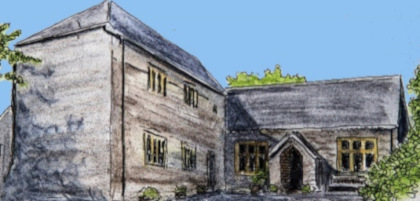
MANOR
HALL MATTERS
Task No.1 is to say thank you to
everyone who combined to help make our Annual Christmas
Distribution Morning such a big success.
Thanks have to go in particular to Stuart on keyboard, the helpers in
the kitchen, and to the Newsletter which shared with us your donations for your
seasonal messages in the December edition.
The outcome was a tidy sum approaching £300 going into our recently
created Roof Restoration Fund which should help us buy a fair number
of slates as and when the time comes!
Task No. 2 is to thank you also for your
patience when using the Hall recently because the heaters have been playing up
a bit, especially the one by the door which was substantially rebuilt early
last year. So, you can appreciate the
frustration of the Committee to be faced with the prospect of securing yet
another black box/printed circuit at a significant cost. However, there is good news and that
is, with the help of our engineers, Hiscock & Son, Ilfracombe, the
manufacturers of the heaters have agreed that the effective life of the last
unit was disappointingly short, so they're sending a replacement free of
charge! By the time you're all reading
this, things should be remedied.
No, 3 is a request that all Hall users
remember the importance of the dehumidifier . . . it's an exceptionally damp
atmosphere at present and the running of this piece of kit is essential to
reduce condensation on the walls which otherwise stain and bring forward the
need for re-decoration. It's perfectly OK to turn it off when in session,
because the machine does make a humming noise, but please, please, turn it back
on again before as you leave!
Finally, Task No. 4 is to alert you to
the date of Saturday, 18th
February when
some of our friends from the well-established Monday
afternoon Craft Group are combining to organise a Jumble Sale with the
proceeds going to Hall Funds. So,
even when you're reading this, there should still be plenty of time for you to
rummage at home and send along all those 'never use' or 'rarely used'
items to convert into ££'s or ££££'s!
And better still, come along as well and buy a few bits 'n pieces,
raffle tickets and refreshments. See
you there!
Colin Trinder
16
MARWOOD HILL GARDENS
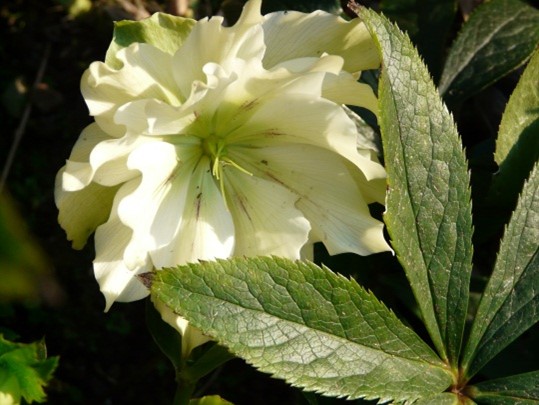
With the mild winter so far, blooms are already appearing at Marwood and the Gardens and Tea Room will fully re-open for 2012 on Thursday, 1st March.
Before then, however, there are two Snowdrop and Hellebore Week-ends to enjoy on the 18th & 19th and 25th & 26th February from 10.00 a.m. to 4.00 p.m. The Tea Room will be open for hot drinks, cakes and bowls of warming soup. There will also be plants to purchase. Entry £4.00
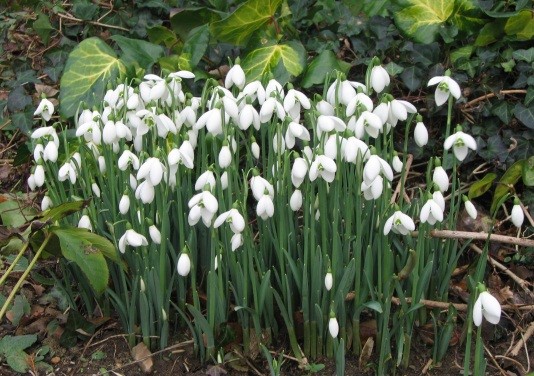
17
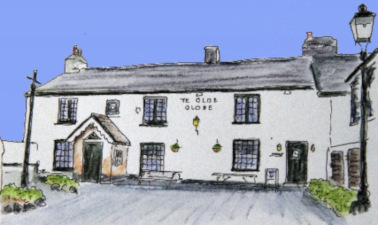
NEWS FROM
THE GLOBE & SAWMILL INN
Sunday Roast Lunches
At the Sawmill
Carvery served between 12.00 and 2.00 p.m.
£9.00 [includes free soup and free sweet,
both from the self-serve counter [available whilst stocks last]
At The Globe
Roast Lunch Main Course £6.952 Courses £8.95 3 Courses £10.95
Booking advised at either pub
Sawmill: [01271] 882259 - Globe: [01271] 882465
Mothering Sunday: 18th March - be sure to book in plenty of time!
£6.00 Lunch Menus available at both The Sawmill & The Globe
Our menus can be viewed on our websites: www.thesawmillinn.co.uk and www.yeoldeglobe.co;uk
18
CROSSWORD ANSWERS
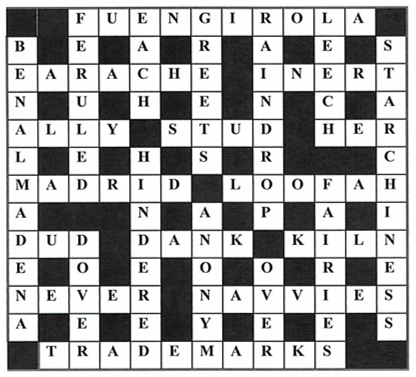
19
MILITARY WIVES - THEN AND NOW
In our village there are a surprising number of ex-military
wives whose husbands were in the Army, Navy or RAF, and most of us were
involved in this life during the years between 1960 and 1990.
It was, therefore, interesting to read and see aspects of
the lives of the Chivenor and Plymouth wives in Gareth Malone's Choir and
compare them with our experience. The
main differences are two-fold.
First, their husbands were in Afghanistan, as we are all
aware, a major and dangerous war zone, with the constant worry it brings. Our experiences were when the forces were in
a time of a Cold War defensive role, but included the dangers presented in
Northern Ireland, Belize and the Falklands.
Then, as now, families were often left in married quarters
in their last posting station. Many Army wives stayed in Germany whilst
husbands were in Northern Ireland.
There were sometimes 'years unaccompanied' when letters were the only
means of keeping in touch.
That brings the second difference - means of
communication. We saw the Chivenor
wives skyping and e-mailing their husbands in Afghanistan. What a difference!
Bad news could still bring the C.O. and Padre to the door
when an aircraft crashed or a soldier was killed, but at least we did not have
to bear the 'news blackouts' that occur now when a fatality occurs so that the
family can be informed before the news media gets the story - this must be
truly horrific.
So, talking together we felt there were 'fors and against'
the present situation of instant communication. Wives and families on a station now are more
restricted due to the necessary security surrounding every station. This makes it more difficult for the
families to interact with the local population in their area. But also, because of the ease of community,
they seem less inclined to support each other and become a closer
community. I'm sure 'The Choir' has
changed that.
Whatever the situation, I'm sure we all wish a speedy end to
the situation in Afghanistan and a return of the soldiers to Chivenor and
Plymouth on a more permanent basis.
Yvonne Davey
Wherever you are my love will keep you
safe,
My heart will build a bridge of light across both time and space.
Wherever you are, our hearts still beat as one
I hold you in my dreams each night until your task is done
Light up the darkness, my wondrous star
Our hopes and dreams, my heart and yours, forever shining far
Light up the darkness, my prince of peace.
May the stars shine all around you may your courage never cease
The Chivenor Military Wives' Choir
20
SOUTH WEST COASTAL FOOTPATH
630 Miles from Minehead to Poole
Since our retirement two years ago a
long held ambition to complete this wonderful walk has now been achieved.
The first stretch from Minehead to
Padstow was completed on day trips in the spring of 2010 - very challenging but
timed beautifully for the abundant wild spring flowers and glorious weather.
The first day saw Wendy waiting for me at Porlock Weir and me still at
Porlock, three miles away and already an hour late! No mobile phone coverage, which was true on
50% of the walk, and highly variable average walking speeds made the pick-up
times a bit unpredictable. It took me a
while to get into my stride and on occasions I was dead on my feet, as I was at
Buck Mills. Again late for the arranged
pick up at Clovelly and feeling unable to walk another step, I saw a red
telephone box and rang Wendy who as luck would have it was browsing in the
Merry Harriers Garden Centre, just across the road, and came to my rescue.
Further on from Hartland, Wendy went to
find Kirsty Allsop's cottage at Welcombe Mouth, and yes it looks just like it
does on the television. This and
Marsland were two of our favourite parts of the coast, so quiet and unspoilt,
with babbling brooks and soaring cliffs.
Over the weeks I settled in to the rhythm of
the walk and learned to take my time.
For 98% of the walk I was on my own but was joined by Dave and Ann
Harris's son-in-law Lee for a day's walking near Bude. Where possible Wendy joined me at beach cafe's
along the way for refreshments and to share in the beauty of it all. In a small bay west of Widemouth Bay the
turquoise waters were crystal clear and I saw shags chasing and feeding on
dozens of small fish close to the shore.
In fact there were many pauses on my journey to admire the flowers,
birds or just the magnificent scenery.
Apart from Wendy's assistance, I
utilised the rural bus service, a real lifeline to the local communities and
walkers alike. The local characters,
their chat and dialect were very entertaining, but I seemed to be one of the
few who did not have a bus pass.
Awaiting the 6.45 bus from Port Isaac one morning, a young Malay girl
greeted me, 'I come see Doc Martin, big fan!'
I thought to myself, 'Do they think he's real?' Sadly I think Port Isaac has lost a lot of
its charm, as it has had to accommodate another car park just to enable the Doc
Martin fans to visit. At Boscastle I
descended the footpath only to see Tom and Inge Bartlett, who took the snap of me
for the newsletter. After the sad
disaster that befell the village it was good to see it almost back to its old
self.

From Padstow the walk was resumed in the
late summer, but St. Agnes Head was not seen due to misty rain and gales, not
pleasant, but almost the only day of continual bad weather and thankfully the
sun came out for one of my favourite stretches, Wheal Coates to Tehidy, through Porthtowan. We stayed at Scorrier and the whole area was
so atmospheric, steeped in Cornish mining history, a really good place for
Wendy to practice her watercolour painting in which she had just started
classes. Sunshine continued all the way
to St Ives and Wendy and I met up for a lovely meal in a seaside cafe just
below the Tate Gallery there. I then
finished the seven-mile boulder strewn path to Zennor on a very windy day; it
was a bit hairy but ended with a visit to see the mermaid of Zennor in the
church there. The boots were then hung
up for the winter with almost 40% of the walk completed.
My walk resumed in Spring 2011 on a
beautiful day at Zennor. I mounted a
large rock to take in the wonderful view, pirouetted in ecstasy, fell off and
twisted my ankle and knee. With two
consecutive four-day breaks booked, the outlook was bleak, but eventually I
limped off only to suffer a collapsing grass pathway across a slimy peat bog
that landed me down in the mire. After
this sorry start I arrived at Cape Cornwall two hours late to find Wendy busy
painting and not even noticing I was late.
Thankfully the next day, although
very sore, I was mobile and pressed on around Lands End, a sorry sight compared
to half a century ago. Aside from the hideous building, you are now not allowed
anywhere near the cliff edge, so its whole grandeur is lost. Never mind, the majesty of the coast is found
at the Minack Theatre that sits in splendour atop the cliffs, with the most
wonderful sandy beach at Porthcurno below.
Mousehole, Newlyn and Marazion passed by
with many fresh fish suppers consumed and Lizard Point now in sight with its
colourful serpentine rocks, but sadly without a sighting of Cornish
Choughs. The next pick-up point was
Cadgwith Cove, one of our favourite Cornish fishing villages, the setting for
the film Ladies in Lavender and a place we stayed at years ago, in a tiny
cottage owned by Rodney Bewes from the Likely Lads, featured on Through the
Keyhole.
Wendy's cousin Angela and partner had
joined us and I pressed on with Lawrence while the girls mooched around the shops
and visited the wonderful gardens in the area.
Coverack and Porthallow and then the approach to the beautiful Helford
river, making sure Gillan Creek was crossed by stepping stones within 1 hour of
low tide. We met up and had a leisurely
lunch on the other side watching the tide come in, and the frustration of
walkers who hadn't done their homework and had to walk many miles around the
creek.
Our next base was St Mawes where I took
a ferry across the Percuil River and the route to Portscatho, a stretch I had
never walked before - lots of small sandy bays ideal for family holidays. Onwards to Mevagissey and then the relatively
busy St Austell Bay. Carlyon Bay seemed
strange with a false beach, sea defence wall and a deserted re-development
scheme, will it ever be finished?
We then stayed in a caravan just outside
Polperro and I completed the lovely stretch from Fowey through to Looe, We used
to visit Polperro regularly when Graham and Glenys who used to own Miss
Muffet's moved there. The next part
from Looe I had never walked before but there are some exclusive retirement
homes around Seaton and Downderry and the footpath weaves its way past the
bohemian mass of chalets and holiday homes at Whitsand Bay and then the
charming twin villages of Kingsand and Cawsand an area we will definitely visit
again.
The Plymouth to Dartmouth section was
beautiful but challenging in terms of crossing all the river estuaries by
ferry, some of which only run once or twice a day and in the case of the river
Erme, the only way to cross is by wading at low tide.
We stayed again in a caravan at Brixham
and I was able to duck up to the National Trust house at Coleton Fishacre and
have lunch with Wendy who was visiting the house and garden. There was a lot of coastal erosion around
Sidmouth and this meant lots of detours inland and although by this time I was
feeling quite fit, a septuagenarian couple from Melbourne outpaced me to Seaton
and then on to Beer where I had to duck in to a pub to escape the rain and
reminisce on my first ever sea fishing trip there at the age of seven. Plenty of mackerel were caught that day and I
still love them now. Lyme Regis was the
final point before resuming in the autumn.
With most of the walk now undertaken a
final four-day break was had at Weymouth to do the stretch from Lyme Regis to
Weymouth where all the preparations for the sailing Olympics here and at
Portland can be seen. The following day
I reached Lulworth Cove and when Wendy picked me up we decided to return to a
pub I had passed at Osmington that evening where we ran into Phil and Lainey
who were on holiday. The week finished
at Swanage after some surprisingly steep ascents compared to North Devon. Unfortunately we had to return to complete
the section east of Lulworth Cove as this area is on an army firing range and
is closed to the public during the week.
When I did complete it on a weekend it was interesting to see the
deserted village of Tyneham, taken over by the army in 1943 and quite an eerie
place.
Two months then passed by until the day
of my 60th birthday in November, an apt day to complete the last seven miles of
the walk, accompanied by twelve friends and relatives. Champagne and fireworks at the end where the
ferry crosses over from Studland to Sandbanks and then a raucous evening meal
rounded off a memorable journey.
Reflections on the walk
- I am glad I did it before I got
too old
- Five adders seen, nearly
stepped on two of them
- 99% of the people I met were
lovely, chatty and friendly. The
other 1% were from London or Cornish small boat fishermen
- When the weather's right, why
go anywhere else?
- Would I do it again? Yes, doing
it the other way round for different views and making it part of our
annual short break holidays and walking only half a day at a time.

Colin
Applegate
21
THE GREAT BERRYNARBOR PLANT
SALE
Sunday, 6th May 2012 The Manor Hall, 2.00 p.m.


Please save some of your
plants and seedling to help make it an even bigger and better sale. Donated plants will be welcome at the Hall
from 10.00 a.m.
If you have any surplus plant
pots, especially larger sizes, please leave them at the village Shop for others
to use.
We hope to have plants from
all categories including trees and shrubs, herbaceous perennials, fruit and
vegetables, indoor and pot plants, bedding and annuals.
There will also be some space for stalls connected with gardening and plants. If you would like to have a stall to promote and advertise your business or cause, or for further information about the sale please contact Kath Thorndycroft on [01271] 889019.
Proceeds to Berrynarbor Community Shop
22

23
CLIMBING THE SYDNEY
HARBOUR BRIDGE
After
we had got over the shock of being unexpectedly invited to visit some
relatively new friends who are at present living and working in Australia, I
knew right away that no trip to Sydney would be complete without climbing the
Harbour Bridge.
There
are 3 different climbs (Express, Discovery or Bridge climb) and they can be
done at dawn, in the morning, afternoon or twilight/night. We opted for the Bridge climb at 10.25
am. We got there in plenty of time and
were given the opportunity to join a climb 10 minutes early. The climbs go at 10 minute intervals in
groups of 14 and the total climb takes 3 to 3 1/2 hours.
Preparation
took 45 minutes. First we went into a
room and stood on dots in a circle. This
was to introduce ourselves to the people in our group. Two couples were on honeymoon, one couple was
celebrating their 15th wedding anniversary and we were celebrating meeting 37
years ago.
We had a breath test
done by counting 1, 2, 3 4, into a machine. and paperwork had to be completed
and once done we were given our climbing suits.
[This order was reversed after the climb.] Next we had to put on belts which had the
device that clipped onto the rails all the way along the approach to the bridge
and up and down again, so there was never a risk of falling off! A radio was also put on to the belt
connected to a headset so that we could clearly hear the Team Leader.
We
were given handkerchiefs with a piece of elastic sewn to it that went around
our wrists in case we needed to use a hanky while on the Bridge (for wiping
away tears of elation no doubt) as well as a baseball hat which had to be
clipped on; in fact everything had to be
clipped on - beany hats if people wanted those in case they thought it would be
too windy, sunglasses had to be clipped onto special holders which in turn were
clipped onto the climbing suit. Gloves
as well were clipped on and tucked into the sleeves of the climbing suit.
_2019-06-21.jpg)
©Benh LIEU SONG (Flickr)
CC BY-SA 4.0, via Wikimedia Commons
Then
we had to practice climbing up fairly steep steps as there were four flights to
negotiate to get up to the Bridge structure itself. These were nothing compared to the real thing
which were pretty much sheer straight up.
At last we were deemed ready to go and we walked through the level
approach high above the road below on a narrow walkway about the width of a
plank and had to climb through very narrow bits as well.
The
actual climb up the arch of the Bridge is by steps which start off quite gently,
then there is a steep piece of about 100 steps before it levels off to the
top. We had our photographs taken at
various intervals to record the momentous event and you cannot imagine the
feeling of absolute sheer joy on reaching the top of the Bridge with a
fantastic 360 degree view of Sydney, including the nearby Opera House, all the
suburbs and the ocean beyond. To know
that we were actually on top of the Sydney Harbour Bridge was almost
unbelievable!
We
walked across the very top of the Bridge and down the other side and it was pointed out
to us that a bird had nested in one of the girders. I wonder what it thinks at midnight on New
Year's Eve?
It was a truly wonderful, exhilarating
experience, one which we will never forget and a marvellous opportunity. At other times during the holiday, we were
also able to walk and drive across the Bridge and sail under it.
Bridge Statistics:
- 6 lanes of road
traffic on the main roadway; two lanes of road traffic on the Eastern side
(formerly 2 tram tracks); a
footpath and on the Western side there are 2 railway tracks and a bicycle
path.
- The arch is
composed of two 28 panel arch trusses; their heights vary from 18m at the
centre of the arch to 57m at the ends next to the 4 x 89m concrete pylons
faced in granite - one of which it is possible to climb up (which we did)
to take more pictures.
- The arch has a
span of 503m and its summit is 144m (440 feet) above mean sea level.
- The total weight
of the steelwork on the Bridge including the arch and spans is 52,800
tonnes with the arch itself weighing 39,000 tonnes. About 79% of the steel was imported from
England.
- The Bridge is
held together by 6 million Australian made hand-driven rivets.
- The contract to
build the Bridge was awarded on 24 March 1924 to Dorman Lang and Co Ltd of
Middlesborough at a cost of £4,217,72. 11s 10d.
- On Tuesday, 19
August 1930 the two halves of the arch touched for the first time, each
being built by creeper cranes on either side of the Parramatta River.
- The Bridge was
officially opened on 19 March 1932.
Sue Squire
24
FRED RICHARDS - ANOTHER BERRYNARBOR MAN
These days there is a lot of
negative publicity concerning people in public life, I
write about a Berrynarbor
man who loved the village and did much for it and North Devon with no thought of
personal gain.


Fred was born at Hammonds Farm in 1888,
the eldest child of Benjamin and Mina. He
attended Berrynarbor
School where today he may well have been labelled difficult, or even expelled. Fred argued with the Headmaster
and after being caned for something he did not do, refused
to return, choosing to walk to Combe Martin School [now the Community Centre]
after milking the cows by hand as he had to pay 1d a week out of his own money
to the school.
In 1915 Lady Penn Curzon offered him
Barton Farm to rent, which he later bought when the Watermouth Estate was sold.
Fred strove to find a place in the
village for young men to meet and enjoy a social life which led to the
formation of the Men's' Institute. From
those early days another quality, to fight for a just cause and concern for
people, took him into local government, first as a member of the Parish Council
and then of both the Rural District from 1929 to 1964 [11 of these as Chairman]
and the County Council from 1939. He
was made an Alderman in 1957.
During those years he was instrumental
in bringing mains water to Berrynarbor [c1949] and personally loaned money
[interest free] to enable the Parish to purchase the Manor Hall for the village
use. Fred had the foresight to the needs of the
community: a founder member of the Water
Board and the building of Westland Pound Reservoir. He was instrumental in setting up Exmoor
National Park, of which he was the first Chairman, the acquisition of land
and the building of the crematorium outside Exeter, the first in Devon and was
also a local magistrate. When local long
distance runner Bruce Tulloh won a Gold medal in the 1962 European
Championships there was very little or
no 'Chairman's Allowance' Fred decided this achievement deserved recognition
and gave a reception himself.
Fred gave up public life in the late
1960's because of ill health and died in 1972.
Jill Sidebottom
25
THE SEASONS
But bad weather yet to come.
Wrap up warm, have hot drinks
And huddle in your home.
Soon the snow will paint things white,
The children all enjoy;
Igloos, snowmen, sleigh, that's right,
Joy for girl and boy!
When that's over, the wind will blow,
The gales strong and cold!
You may not feel it now,
But wait until you're old!
It's what we've waited for.
The buds will show, bye, bye to snow,
It's simple, just God's law.
Now summer's here, we love this time -
Long days, with lots of fun.
Holidays spent by the sea
Enjoying the lovely sun!
With autumn here, trees start to change
To colours, with their glory.
Four seasons gone, and I'm off home,
That finishes my story.
Tony
Beauclerk - Stowmarket
26

BERRY
IN BLOOM & BEST KEPT VILLAGE
What a difference a year makes! Last year we were all frozen and the gardens
were hibernating. This year in the first
week of January in my garden I have in flower, snowdrops, hellebores,
primroses, camellias and some daffodils are almost open. Not that unusual, but there are also roses, fuchsias,
geraniums and many other flowers that have not stopped flowering since summer.
This year we shall be continuing to
plant the tubs and supply the hanging baskets but we are having a year off from
actually entering the competitions. We
hope that you will continue to support us and join us for the litter picks and
the garden open events. If you would
like to take advantage of the hanging basket re-fill scheme please let me know
on 882296. We'll be collecting empty
hanging baskets to be re-filled by Streamways nursery from March onwards.
The first fund raising event for us this
year will be a Fun Quiz and Supper Night in the Manor Hall on 2nd March in
conjunction with the Horticultural Show Committee. We'll also be holding an open meeting in The
Globe on Wednesday 7th March at 7.30 p.m., please come along if you have any
ideas or want to join us.
Wendy Applegate
27

Lumberjack cake
Trying to kid myself that cake can be
healthy, at least this recipe is full of healthy ingredients and is a real
treat in these cold months.
- 2 large eating apples such as Cox's or Russets
[peeled, cored and coarsely grated, 175-200g]
- 250g chopped dates
- 1tsp bicarbonate of soda
- 125g unsalted butter
[cut in to small pieces and softened]
- 175g light soft brown sugar
- 1 free-range egg
- 150g plain flour
- Pinch of salt
- Pinch ground cloves
Topping
- 75g unsalted butter
- 75g light or dark soft brown sugar
- 60g desiccated coconut
- 75ml milk
Put the grated apple, dates and
bicarbonate of soda in a bowl and cover with 250ml of boiling water, stir and
leave until cooled slightly. Grease an
18cm square or 20cm round cake tin and line with baking parchment.
Meanwhile in another bowl beat the
butter until soft and then beat in the sugar, add the egg and beat together
until fluffy. Stir in the apple and
date mixture including the liquid and mix well.
Sift the flour, salt, and ground cloves over the mixture and then fold
in carefully. The mixture will seem a
bit sloppy but this is OK.
Pour the mix in to the prepared tin and
bake for 40 minutes until quite firm to the touch. While the cake is baking prepare the
topping. Place all the topping
ingredients in to a small saucepan and stir over a low heat until the butter
has melted. After the 40 minutes'
baking, take the cake out of the oven and pour over the topping, spreading the coconut evenly. Bake in the oven for another 25-30 minutes until the topping is golden and cake
is cooked through. Leave the cake in the
tin until completely cooled. The cake
is very moist, so store in the 'fridge [unless the lumberjacks eat it
immediately!]
Feet up in front of the fire, Mmmm
Wendy Applegate
28
DIGITAL
TV RECEPTION PROBLEMS
For those involved in the above issue I
thought I'd give you a quick update. If you've been reading the North Devon Journal
you'll know that at last the problem has become regional news. As a result of various people, including
myself, pushing the issue we have at last got some answers. It seems the problem stems from weak TV
transmitters which, in some cases, are being overpowered by a large
transmitter in Wales. That means that some people in the area
receive Welsh TV whereas Berrynarbor mainly suffers from weak or
interrupted signals. Ofcom says that there is a shortage of
available transmission frequencies in the UK but that changes to frequencies in
Ilfracombe in 2013 may rectify the problem, but no promises as yet. MP Nick Harvey is taking up the
case with Ofcom and Ed Vaizey the Minister for Culture and Communications.
To that end he has asked residents to
let him know what problems they are experiencing. I have done this on your
behalf but to add more pressure individuals should do the same by
completing an online survey via www.nickharveymp.com or by contacting his office on 01271 328631.
I expect you all feel as I do, that you
wish Ofcom had been honest in the first place and saved us all expense and
aggravation over the last 18 months or more. Also why did they go digital if they
knew that the infrastructure wasn't in place? Nevertheless, a little progress in the right
direction has been made so watch this space!
Jill
Massey
29
LOCAL WALKS - 130
"Spring
in the air Mrs. Jones?"
"No! Why should I?"
As I write on the third day of the new year, there are
reports of winds gusting to 84 mph in parts of the west country whilst
Edinburgh has experienced winds exceeding 100 mph.
But it is mild, whereas I see from my old diary that last
year on the third of January we had snow.
On the same day there was an earth tremor in North Yorkshire,
registering 3.6 on the Richter Scale, which could be felt in Lincolnshire and
Cumbria. The following day there was a
partial eclipse of the sun. So, a lot
of drama!

Having seen primroses in mid-November and the first
celandine in December, I decided to extend my trip to the village shop by going
up Castle Hill and down Ridge Hill looking for signs of spring.
On top of a grassy bank the white bells of snow flake, which
usually follows its relative the snowdrop, had been putting on a fine display
for a few weeks. With them a lone grape
hyacinth which would normally flower in April.

At the bottom of Rectory Hill
the wall valerian was blooming and the yellow sowthistle. I surprised a weasel crossing the footpath over
the field. It soon vanished in the
undergrowth carrying a rabbit bulkier than itself. Growing with holly by the gate is Butcher's
Broom, a strange shrub with bottle green
branches. The tips of the oval leaves are deceptively
sharp because despite their appearance, they are not true leaves but modified
and flattened stems.
At the top of the path were clumps of wild chives which have
a more garlicky flavour than the garden variety. They are useful as a stopgap and by the time
the garden chives are ready for cutting the wild ones will have become too
coarse to be palatable.
Halfway up Castle Hill the yellow-green umbels of Alexanders
had opened out and the neat round leaves of wall pennywort or navelwort were
showing with a few furled leaves of cuckoo pint.
A flock of starlings took off from a field opposite Croft
Lee to perform an aerial ballet.
Near the top of Ridge Hill the springy four-sided twigs of
spindle [euonymus] still bore pink, lobed capsules opening to reveal orange
coated seeds. Further down the hill,
where it was more sheltered, were several lesser celandines, Wordsworth's
favourite flower.
Another unseasonal flower I was surprised to find in December was triangular garlic [or
three-cornered leek] at Torrs Park, Ilfracombe. A spike
of white bells, it would usually flower in April or May. I have been picking purple sprouting
broccoli since the end of September although this
year I had tried a late variety, which should be cropping in April and May,
instead of the usual Early Purple Sprouting ready from February or March. This is very curious.
So far the wood pigeons are leaving it alone. A line up of pigeons, one atop each plant,
can look very comical but they have a devastating effect on the tender
shoots. This year pheasants have been coming into the
garden and they also head straight for the purple sprouting plot but no sign of
damage yet.
The awful pun I've used as a heading is one of the seasonal
quips with which the Welsh father of Andrew Davies [adapter of
many classic novels for television] used to annoy his family and customers. The other being: "Winter draws on Mrs.
Jones?" "None of your business!"
Illustrated
by Paul
Swailes
Sue H
30

31
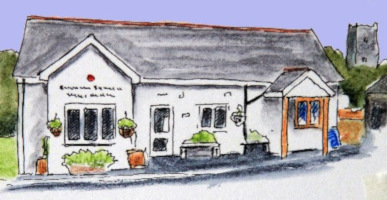
NEWS FROM OUR COMMUNITY SHOP AND
POST OFFICE
If it's not too late, we wish every
reader all the best of happiness and health in 2012. And yet, it's already
nearly Valentine's Day! In the shop are
a selection of Valentine cards and in BerryBay take a look and you will find
suitable gifts for your loved one.
On Saturday, 11th February, Berrynarbor
is celebrating the Carnival of Venice [could be instead of a Valentine
Dinner!]. It will be held in 'La
Trattoria della Bassetta' [otherwise, The Manor Hall!] and all details are
given below. It should be a fun evening and if you join in
that fun even more and wear a mask, you might even win a prize! So book the date now.
Some people don't yet realise that we
now open every Wednesday afternoon throughout the year, making it even easier
to shop - and that is even more important at this quiet time of year.
So, Happy Shopping
PP
of DC

32
A
TALL STORY
A man walks into a restaurant with a
full-grown ostrich in tow. The waitress
asks for their orders.
"A hamburger, fries and a
coke," says the man and turns to the ostrich, "What's
yours?" "I'll have the
same" says the ostrich.
A short time later the waitress returns
with their order. "That will be
£9.40 please," she says and the man reaches into his pocket and pulls out
the exact amount.
The next day, the man and ostrich come
again and the man asks for hamburger, fries and a coke and the ostrich says,
"I'll have the same." Again
the man reaches into his pocket and pays with the exact amount.
For a while this becomes routine until
two weeks later the two enter the restaurant.
"The usual?" asks the
waitress.
"No, this time it's a treat, so
I'll have a steak, baked potato and salad."
"Yep! Same," says the ostrich.
Shortly the waitress brings the order
and says "That will be £32.62."

Once again the man pulls the exact
amount out of his pocket and places it on the table.
The waitress cannot contain her
curiosity any longer. "Excuse me,
sir, how do you manage to always have the exact money in your pocket?"
"Well," says the man,
"Several years ago I was clearing the attic and found an old lamp. When I rubbed it a genie appeared and offered
me two wishes. My first wish was that
if I ever had to pay for anything, I would just put my hand in my pocket and
the right amount of money would always be there."
"That's brilliant!" says the
waitress. "Most people would wish
for a couple of million pounds or something, but you'll always be as rich as
you want for as long as you live!"
"That's right. Whether it's a pint of milk or a Rolls
Royce, the exact money is always there."
"But, sir, what's with the
ostrich?" asks the waitress.
The man sighs, pauses and replies,
"My second wish was for a tall bird with a big bum and long legs who
agrees with everything I say."
33

BERRYNARBOR WINE CIRCLE
Jonathan and Susie Peat saw Jean and Peter Pell's advert, 'Home for Rent'
and seized the opportunity to leave a South Devon let and transfer to a North
Devon village to see if they liked this area of the county. They joined the
Sterridge community on the 4th November and the Circle on the 16th!
Newcomers to the village and to the
Circle can provide a valuable, interesting and perhaps beneficial opinion. Their first impression of the Circle was that
it was 'thriving . . . impressed with
the number of people supporting it and the level of interest'.
When asked about our Christmas
'do', Jonathan commented that it was 'a
nice idea . . . clever to combine a social occasion with a wines'
presentation'. For those that haven't
yet joined, our Yuletide tables groan with a three or four course meal,
supplied by our members.
Personal preference affects everything;
it was interesting to hear his thoughts on our Christmas selection: two whites,
three reds and a dessert wine. Following
a Sancerre taste-a-like, he remembered, particularly, 'the Yorkshire one',
another white wine. Yes, this came from
a West Yorkshire vineyard first planted in August 2007, in, ironically, Last of
the Summer Wine territory, Holmfirth.
Jon found it 'sweet', but heard others nearby saying that they liked
it. 'I'm usually disappointed by English
wines... they're expensive . . . perfectly acceptable, but tend not to meet my
taste because of the ones that they can grow here. I like something dry like a Chardonnay or
oaked Chardonnay. It was a well-made
wine, but at £11.99 I wouldn't buy it.'
Two southern Italian and a French red
followed, but a Chilean dessert wine: 'Vistamar Late Harvest Moscatel 2010' was
our finale. A new addition to Majestic's
stock, it sells at £4.79, for a half bottle, when two bottles are
purchased. It made a delicious
accompaniment to our dessert and positive comments abounded. On Christmas Eve, we visited the Warehouse,
specifically, to buy some; however, we
discovered that The Times had written recently about this little sweetie. Their article had spurred many others, to buy
it, so, unusually, we left empty handed.
'Call My Wine Bluff' is synonymous with
our January meeting; it's a 'winederful' beginning to a new year! Brett Stevens of the Fabulous Wine Company
supplied the alcohol and our three presenters supplied the 'lies, damned lies
and statistics!' Our three white and three red taste tests
were wines from Italy, France, Argentina, Spain and two from
Australia. Their prices ranged from £5.99 to £10.99.
Noise levels always rise as any
successful social event progresses. Our drinking and debating of
whether, for example, we were drinking a Pinot Noir from Argentina, a
Burgundian Fleurie or a Chilean
Merlot was accompanied by plenty of hilarity and banter, which filled
the Manor Hall and all for an entry price of just £5! Strength does not always
come with number; five teams of six and one team of four competed, but,
ironically, or perhaps, because there was less debate, the smallest team
won: four bottles of good wine.
Our season continues until
May. If you fancy joining our
'motley crew', please contact our Secretary, Tony Summers, on 883600 or Jill
McCrae on 882121 for details.
Judith Adam - Promotional
Co-ordinator
34
MEAN FEET - A DATE NOT TO BE MISSED!

Remember Tongues of Fire?
Well thanks to Beaford Arts we're going to get all the village together
again, this time dancing, on a Sunday afternoon in April. Mean Feet dance group will lead young and
old a merry dance round the village stirring up a brew that is called 'People
Juice' - a series of dance and comic physical theatre sketches held together by
a preposterous storyline.
We are looking for lots of village extras in a variety of
performing roles - dance and non-dance,
so if you want to be part of it call me on [01271] 882675. For more information check out the Beaford
Arts programmes now available in the village shop or log on to www.meanfeetdance.co.uk
The afternoon will culminate in a grand tea party in the
Manor Hall where we might just create the People Juice cocktail.
So dust off those blue suede shoes, start tapping your toes and boogie
down to the village square at 3.00 p.m. on Sunday, 29th April.
Fenella
35
MOVERS AND SHAKERS - NO. 37
HENRY SHAPLAND
[1823 - 1909]
Founder of the Company to become Shapland and Petter
HENRY PETTER
[Baptised 1826 -
1907]
Joint owner of Shapland and Petter, manufacturers of Arts and Crafts
style furniture
These two names are so much part of
Barnstaple's history that I didn't think they should be separated.
As a comparative newcomer to North
Devon [mid-1970's] I thought only of the large yellow brick building the far
end of Barnstaple Bridge as Leaderflush Shapland, door makers and fitters. But what a mistake I made!

On a chance visit to the Museum of
Barnstaple and North Devon to view photographs of Exmoor, I spotted a small
display of fine furniture by this notable company, and wanted to know more
about its founders.
HENRY SHAPLAND, born in 1823, was the son of
William Shapland, bread baker of Queen Street, Barnstaple. Attending the Bluecoat School until he was
10 years old, he was later apprenticed to John Crook, a local cabinetmaker. After working for some time with Crook, he
went to London where his older brother Richard worked as a printer, 'travelling
by stage coach to Exeter, and then by train, as the railway did not reach
Barnstaple until 1854.'*
In 1847 he married Betsy Sarah Narracott. Life in London didn't work out and they
moved back to Barnstaple. The next year
he decided to try his luck in America where he found that modern machinery was
being invented that cut out much of the preliminary work of sawing and
planing. Here was born his philosophy of accepting innovations when they
helped his trade, leaving more time for his specialist tradesmen to complete
intricate work. He shared a room with an
immigrant German engineer who had invented a 'wavey' moulding machine: it could
produce finely carved mouldings on curved surfaces, thus saving a lot of time
for the craftsman. But he was allowed to see it only if he left the country
immediately! He made some hasty notes
and returned home to Barnstaple.
In 1854, a married man with two
children, he built a moulding machine and went into production in one room at
the Raleigh Woollen Mill at Pilton. He described himself as an 'ornamental
moulding maker employing one man'.*
Before long he moved to Bear Street and visited London looking for
custom from cabinetmakers.
About this time, HENRY PETTER joined him, bringing skills of accountancy and
salesmanship. I have not been able to
find his date of birth but he was baptised in August 1826. Another Barnstaple man, he moved to London
as a partner in a publishing company, and then became part owner of the North
Devon Journal before joining Henry Shapland.

In 1856, Shapland and Petter opened a
shop in the High Street, selling pianofortes and other musical instruments -
but this only lasted for two years. In
1864, they returned to the original woollen mill at Pilton, eventually using
the whole site. Sadly, on 5th March
1888 the company suffered a catastrophe:
the factory was completely destroyed by fire. All records, finished furniture,
timber and workmen's tools were destroyed.
A relief fund was quickly set up to support the employees who otherwise
would have had to move to the workhouse for the destitute. Fortunately, the two Henrys had bought a new
site: a shipbuilding yard at the end of
the bridge known as Bridge Wharf. . Soon plans were underway for a new factory,
using modern machinery from America - and the craftsmen got their jobs
back. Every precaution was taken to
ensure that never again would their factory be destroyed by fire. Concrete floors were laid, fire hydrants
fitted and buckets of water sited on every floor. Iron bridges connected buildings. Even the
staircases were built on the outside of walls.
The business continued to thrive during
the 1890's - the factory was well sited for supplies of raw timber by sea and
train. Shapland's son William and
Petter's son Charles both entered the business and travelled the world buying
materials and selling products.

During this time, the range of furniture
had grown enormously. Chairs and tables of all sizes and shapes, bedroom
furniture, bookcases, church altarpieces and carvings and shop fronts were all
part of their skills. After the Great
Exhibition of 1851 [the year Shapland started his wave mouldings], there
followed the William Morris, Burn-Jones and Rosetti eras. The Arts and Crafts style became fashionable,
and Shapland and Petter entered with enthusiasm, producing beautiful furniture
of quality.
They opened a showroom in London near
Liberty of London. A design team was
established, led by a young Scotsman and ledger records show his annual salary
as £321.13.4. This was well above the wage of most skilled cabinetmakers and as
a comparison, the office boy got £15.8.0!
The two Henrys died within a couple of
years of each other - Petter in 1907, Shapland in 1909. About this time, the Barnstaple Cabinet
Company was formed and in 1924 was amalgamated with Shapland and Petter.

During World War I, the skilled
craftsmen were occupied with turning out wooden propellers for the Royal Flying
Corps. After the war, tastes in furniture changed and carved hand-made pieces
were not the vogue. Nevertheless, even through the depression, the company
continued working, producing made to order woodwork for banks [see the old
Lloyds Bank, now Chamber's Brasserie], Tapeley Park, hotels and shop fronts and
church fitments [see two chairs and a reading desk in Barnstaple Parish
Church]. They also equipped British liners, Pullman carriages and The
Guildhall.
During the Second World War, the
factory produced shell cases, ammunition boxes and aircraft propellers for the
Air Ministry and after the war, radio cabinets and contract furniture. Then doors and fitments became stock in
trade and by 1978, 25% of its multi-million pound business was exported. In 1998, Shapland and Petter merged with
Leaderflush, door manufacturers, and due to the recession, the factory closed
in 2009.
For more than 150 years, 'Shappies' as
the locals knew it, was the mainstay of Barnstaple's workforce. And it all happened because one Henry was a
man of enterprise who early on recognised the importance of up-to-date
machinery, and another Henry who provided the finance and commerce to the
business.
* Quotes from Margaret Reed's
'Shapland and Petter of Barnstaple celebrating 150 years' booklet available
from the Museum of Barnstaple and North Devon Price £2
Grateful
thanks also to Alison Mills, Museum Development Manager and Julian Vayne,
Education Officer who kindly provided background information and photographs.
PP of DC
36
AT-A-GLANCE DIARY
| FEBRUARY | |
| 4th | Combe Martin Museum: Race Meeting, Hollands Park, 7.00 or 8.00pm |
| 8th | Mobile Library in Village from 10.45 a.m. |
| 11th | Carnival of Venice, Manor Hall, 6.30 p.m. |
| 13th | to Friday, 17th February: College & Primary School - Half Term Combe Martin Museum Open all week, 10.30 a.m. to 3.30 p.m. |
| 14th | Parish Council Meeting, 7.00 p.m. Penn Curzon Room |
| 15th | Wine Circle, 8.00 p.m., Manor Hall - Judith's Mystery Night |
| 18th | Jumble Sale, 2.00 p.m., Manor Hall. Jumble from 10.00 a.m. |
| 22nd | Ash Wednesday Mobile Library in Village from 10.45 a.m. |
| 23rd | Charity Bridge Evening, 7.00 p.m. Manor Hall |
| 26th | St. Peter's Church: First Sunday in Lent |
| 27th | Craft Group & N.D. Hospice Knit In, Manor Hall, 2.00 p.m. |
| 29th | Friendship Lunch at The Globe, 12.00 noon onwards |
| MARCH | |
| 2nd | Berry in Bloom & Horticultural Show: Quiz & Supper Night |
| 7th | Mobile Library in Village from 10.45 a.m. Berry in Bloom Open Meeting, The Globe, 7.30 p.m. |
| 8th | DEADLINE for articles for April Newsletter |
| 13th | Parish Council Meeting, 7.00 p.m., Penn Curzon Room |
| 15th | Charity Bridge Evening, 7.00 p.m. Manor Hall |
| 18th | Mothering Sunday St. Peter's Church, Family Service with children from the Primary School |
| 21st | Mobile Library in Village from 10.45 a.m. Wine Circle, 8.00 p.m. Manor Hall |
| 25th | British Summer Time Begins - clocks forward one hour |
| APRIL | |
| 4th | Mobile Library in Village from 10.45 a.m. |
| 7th | Berry in Bloom & Horticultural Show Coffee Morning, Manor Hall |
Manor Hall Diary:
| Mondays | Upholstery, 9.00 a.m. to 1.00 p.m. Craft Group, 1.30 p.m. onwards Badminton, 7.30 p.m. |
|---|---|
| Tuesdays | 2nd & 4th in month: N.D.Spinners Yoga, 7.00 p.m. |
| Wednesdays | Pilates Body Workout, 9.00 a.m. |
| Thursdays | Tai Chi, Manor Hall, 11.00 a.m. |
| Fridays | Term time only: Toddlers Soft Play and Activity |
| Penn Curzon Room | Term time only: Monday - Friday
Mornings: Berrynarbor Pre-School
|
Mobile Library:
(Assistant - Jacqui Mackenzie)
| 10.45 - 11.30 a.m. | Village Shop |
|---|---|
| 11.45 - 12.15 p.m. | Sterridge Valley |
37
WILLIAM
DYER - YET ANOTHER BERRYNARBOR MAN!
1839-1893

William Dyer was born at
Berrynarbor, North Devon and was the second son of Jane and John Sharland Dyer who lived at Berrynarbor Mill, now Berry Mill
House, and farmed 8 acres. I think it
must have been a corn mill. There were
two more sons and a daughter. John Dyer
died in 1846 but the 1851 census shows his wife as head of the family employing
a male servant aged 25 as a miller.
I don't know when William went to Quebec but on August 10th
1869 he married Emma Rice Marshall at Newport parish church [Barnstaple] and
they sailed from Liverpool two days later on the Peruvian, bound for
Quebec. The marriage certificate gave
William's residence at Quebec. I have
no way of knowing whether he and Emma knew each other as children, but as
William's father is given as a Maltster and Emma's as
a Seedsman, their two occupations could be connected.
During their time in Quebec, William's occupation is given
on the census as a Draper with Glover, Fry and Co., importers of Dry
Goods. He and Emma had three daughters
- Gertrude Annie [1871], Nellie Blanche [1873] and Florence Emma [1875], all
baptised in the Anglican Cathedral, Quebec.
Nothing much is known about their life there - the 1881 census for
Barnstaple gives Emma back on a visit to her mother with the girls, no mention
of William, but we understand that he was suffering from consumption and the
whole family went south to Aiken for his health and probably to avoid the
Canadian winter. He died on 17th January
1893. The family story says that
William was a successful businessman in Quebec, owning his own company, but
that after his death their lawyer took off with the family money and Emma
brought her daughters home to Devon with very few resources. Emma did not survive her husband long, dying
of cancer in August 1895. Nellie, my
grandmother, married Herbert Sugden in 1897, whom she
had met in Quebec earlier. His father James Sugden
worked for Rylands, a stationery company in
Manchester as a salesman. He was in
Quebec working and had taken his son, who had been ill, on the trip to Canada with
him to recuperate.
Nellie suffered like her father from TB but even with a
collapsed lung gave birth to a family of five, three girls and two boys, my
mother Monica being the 3rd girl and 4th child. According to my mother, her mother refused
to talk about 'the olden days' saying 'I come from good honest folk and that's
enough for me'!
Liz Yeandle - Minehead
38
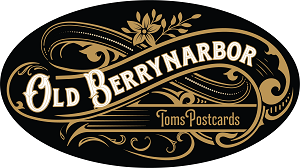
OLD BERRYNARBOR NO. 135
British Legion - Berrynarbor Manor Hall,
c1940
I am following on from my last article with the real
postcard view of the Berrynarbor Contingent of the British Legion c1940. I believe they had regular meetings in the
Manor Hall and would attend Sunday morning Church Parades on a regular monthly
basis.

Fortunately, we are able to
name all the members on this postcard. From left to right:
- Back Row: Percy Thorne, Jack Green, Jack Ford, Mr.
Street, Bill Dinnecombe, Dick Street, Frank Brookman
- Third Row: Bill Street, Ben Draper, Bill Draper, Reg
Huxtable, Jim Ley, Jack Copp, Harold Richards, George Gubb, Ben Draper Snr.
- Second Row
[seated]: Stan Toms, Mr. Lensy,
Mr.Duchear, Captain James, ??, Freddy Rice, Mr. Lord, Daniel Toms
- Front Row: Jack Edwards, Roy Smith, Jack Snell, Jack
Josling
Note how the majority of them are wearing a British Legion
Members' lapel badge and many of them are proudly displaying the medals awarded
during the First World War. There is a man wearing a cap
peering out of the Hall window on the
left.
Sadly, as far
as I am aware, none of the above are still alive. However, if there is anyone who can either
add information or correct any of the names I have given, I should be very
pleased to hear from you.
Tom Bartlett
Tower Cottage, January 2012
NB
: Regarding the previous article, View 134 of the Berrynarbor Home Guard,
the following corrections can be made:
- Back Row: Jack Jewell is Jack Snell, it is Bill
Osborne and Bob Lanston is Bob Lancey
- Third Row: Commander Bill Peachey, Sgt. Newman may
have been Major Newman.
My thanks to Ray Thorne who had the same picture in the North
Devon Journal, page 68, of Thursday, 12th January 2012.
39

NEWS FROM THE PRIMARY SCHOOL
We have had an exciting few months and
as usual a busy run up to Christmas. Our
Christmas Service,
Nativity Service and of course the Senior Dudes Meal were enjoyed by all. We also received a visit from Ofsted
Inspectors during the Autumn term.
The inspection was rigorous. We had two inspectors for part of the first
day and one inspector for the second day.
The inspectors looked at all areas of school life and spent a
considerable amount of time in every classroom. They spoke to children and
parents and spent time in the playground and lunch rooms. Until just before Christmas, the outcome of
the inspection was a closely guarded secret.
However, I am very pleased to tell you that the inspector, Mr Baxter,
judged our school to be OUTSTANDING which places us in the top 6% of schools
nationally. The full inspection report
can be read online and includes comments such as:
We are very proud of this result and I
think it reflects the commitment of our staff and children.
Our SIAS inspection took place this
week. The SIAS inspection considers our
effectiveness as a church school.
The children have warmly welcomed all of
these visitors and shown them what a wonderfully caring bunch of children they
are. We are hoping for a rest from 'visitors'
for a while now as we look forward to some warmer days and getting outside
more.
Sue Carey - Headteacher
40

BERRYNARBOR HORTICULTURAL & CRAFT SHOW
Due to Mick and Sandi's departure from the village and others unable to commit this year, the Committee is currently looking rather 'thin'.
We are looking for eager volunteers to help to organise this village Show. If you are able to help in any way, please contact me on [01271] 883322. Thank you.
Linda Camplin
41

42
QUICK QUOTE
"... wish to all
Flowers in the garden, meat in the hall,
A bin of wine, a spice of it,
A house with lawns enclosing it,
A living river by the door,
A nightingale in the sycamore."
Robert Louis Stevenson
[1850-1894]
43
